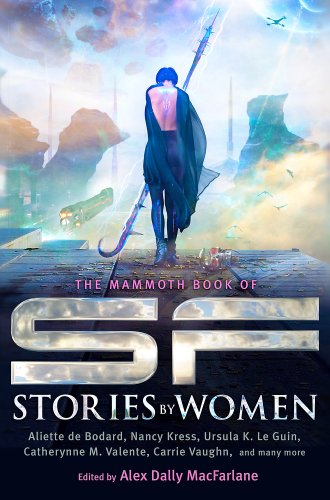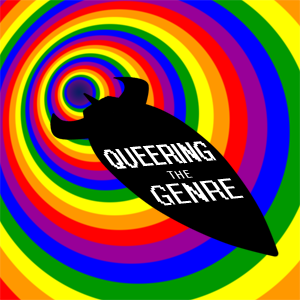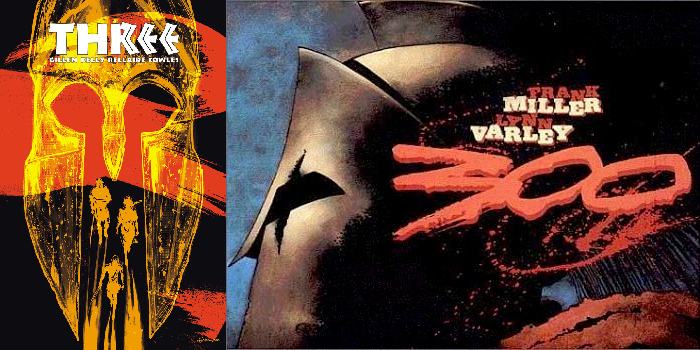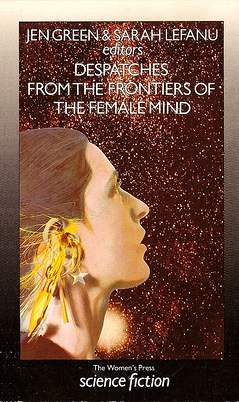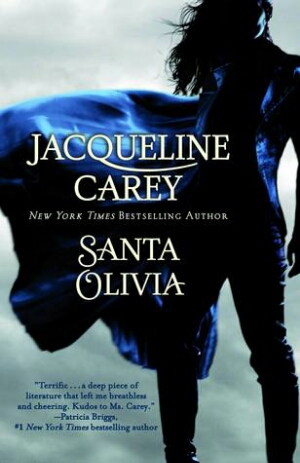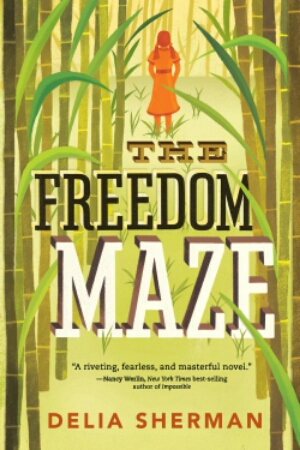Blood of Angels by Johanna Sinisalo (trans. Lola Rogers)
The phenomenon of colony-collapse disorder, the sudden mass disappearance of bees, has become so widespread that much of the world although not, as yet, Finland is facing agricultural and ecological disaster.
Amateur beekeeper Orvo, devastated by the recent death of his eco-warrior son, finds two of his hives deserted and begins to fear that the epidemic has reached Scandinavia. Then, in the attic of the old barn, he makes a mystical and frightening discovery: a pathway to a parallel world. Is it a hallucination stimulated by sorrow and loss or is it something very real and connected with the bees disappearance? His research teaches him that in practically every culture bees are viewed as half-supernatural messengers that can travel between worlds and are associated with resurrection and the afterlife. He begins to wonder if this portal could reunite him with his dead son and whether he can himself escape the ecological meltdown of this world.
The Blood of Angels reworks the Orpheus myth while analysing modern man’s need to deny his mortality and raise himself above the rest of nature, to compare himself to the angels but at what price?
~~~~~
Sinisalo’s writing, and her approach to nature, have been remarked upon as precursors to the approach to the weird taken by Jeff VanderMeer in Area X; having read this novel, that seems to do both a disservice, as they are doing profoundly different things with the environment, but there is no doubt that Blood of Angels has some of the same concerns as Area X, and some of the same presentations.
The similarity is in the understanding of the numinous in nature; Blood of Angels has a reverence and respect for nature throughout its pages, especially bees. It consistently mystifies and weirds nature, makes it strange, barely relatable to humanity; Sinisalo highlights the differences between how we live and nature, how we divorce ourselves from nature, and especially death. It’s a fascinating take on the kind of weird written by Algernon Blackwood, but whereas his sympathy was with man, making nature horrific, Sinisalo makes man horrific, alienates us from ourselves and civilisation, and making nature numinous but also truer, somehow.
It’s intensified by the animal rights theme that comes up in excerpts from the blog of animal rights activist Eero, son of our protagonist Orvo, which emphasises both the similarities and differences between humans and animals, arguing for equal rights from the position of similar-but-different approaches to man and beast. Blood of Angels uses the blog excellently; Sinisalo not only has entries, but comments, and entries coming off comments to previous entries, making it feel like a truly organic blog, the sort of political blog that has sprung up on the internet, with the kind of brashness and rudeness from both blogger and commenters that we have become inured to. It has an interested effect in a novel, shocking the reader with the violence of internet rhetoric, as if a novel should be a more genteel place, as if that vitriol should not infiltrate its pages; but the more traditional chapters of Blood of Angels can also contain that same vitriol and yet it feels totally normal, an interesting comparison.
Sinisalo’s work should not just be analysed on a political level, however, but also on its merits as a novel. Blood of Angels manages one of the most impressive feats I have seen in a novel, that of making a fully fleshed-out character who only appears in the occasional, brief comment on a blog; this is how Tirsu, especially, is manifested, a very real presence in the novel even while never actually appearing in person, and having so few lines dedicated to them. Pupa is similarly clearly portrayed, appearing only in Orvo’s memories, and Ari, who appears only briefly in the whole novel, is very clearly characterised as the money-hungry grubby businessman who will sacrifice anything for profit. It’s an interesting cast in that regard; characters fall on one side or the other of the ethics/profit line, with Orvo straddling it in his roles as undertaker and beekeper. Sinisalo keeps the balance excellently, and through character interactions Blood of Angels challenges orthodoxies on both sides, a difficult trick; yet Sinisalo keeps it meaningful and orthodoxies reveal as much about characters as they do about politics.
The blurb describes this as an Orphic retelling, and spoils a central aspect of the plot that Sinisalo semi-conceals for much of the novel, the death of Eero; Blood of Angels has one particularly Orphic passage, but otherwise is about the process of grieving, of the painful emotional coming to terms with death, and of how this can fail. Rather than being about an attempt to retrieve one’s love for oneself, the loss is concealed for much of the novel, there but not known, some strange cloud hanging over Orvo; when revealed it changes everything that has gone before, and Sinisalo’s concealment makes an awful lot of sense and proves a very interesting piece of character-work.
Blood of Angels is truly a stunning novel of nature, and a strange and numinous work; Johanna Sinisalo has produced a wonderful text here, that I’ll readily recommend.
Half-Resurrection Blues by Daniel José Older
Carlos Delacruz is one of the New York Council of the Dead’s most unusual agents—an inbetweener, partially resurrected from a death he barely recalls suffering, after a life that’s missing from his memory. He thinks he is one of a kind—until he encounters other entities walking the fine line between life and death.
One inbetweener is a sorcerer. He’s summoned a horde of implike ngks capable of eliminating spirits, and they’re spreading through the city like a plague. They’ve already taken out some of NYCOD’s finest, leaving Carlos desperate to stop their master before he opens up the entrada to the Underworld—which would destroy the balance between the living and the dead.
But in uncovering this man’s identity, Carlos confronts the truth of his own life—and death.…
~~~~~
Older’s debut novel, Half-Resurrection Blues feels like an update of the urban fantasy formula for the twenty-first century: a cast dominated by people of colour, in a New York dominated (at least in Carlos’ circle) by people of colour, where people of colour can take all sorts of roles – including being queer. Older has long been outspoken on the importance of diversity in our literature, and this novel feels like it might be him setting out his stall to sell the rest of us on the idea; the diversity of his cast isn’t heavy-handed or emphasised, it just is, built into his world the way it is in ours. Half-Resurrection Blues has queer people of colour in a happy relationship, has business-owning people of colour, has all kinds of people; and Older has simply written the world he observes, rather than the whitewashed one we’re often presented with.
There is one respect in which Half-Resurrection Blues is less diverse than most urban fantasy, mind you, and that’s in its supernatural. Older has ghosts, humans, and the inbetweeners… and that’s it; no werewolves or vampires in sight, a refreshing change from much of the genre. That doesn’t mean Older doesn’t have a number of tricks up his sleeve; there are some other ghostbusting ghastlies in there (the ngks), and spirits are much scarier than you might think from films like Casper or Ghostbusters, more reminiscent of the hungry spirits of the Homeric underworld than an angelic choir with harps. This lets Older create a real sense of dread, without easy answers; there’s no silver bullet here, no holy water and cross, only grim determination and stubborn dedication to finding a way out. That’s a real strength of Half-Resurrection Blues, and it comes through incredibly strongly that there are no easy fixes in this world.
It’s also a feature of the protagonist of the novel, Carlos Delacruz. Delacruz steadily comes apart across the course of the novel as competing demands pull at his attention and his soul, and Older records this stunningly in first person; from drunken levity with ghostly acquaintances to the agony of having been pinned to a couch with his own sword, we really get inside Carlos’ head, and Half-Resurrection Blues is extremely good at making this a very vivid thing. Grief is crushing, levity is lifting, and when Carlos is struggling, the prose isn’t a struggle to read but it makes the reader feel his struggle. It’s a difficult trick to pull off, especially over the length of a novel, but Older has definitely mastered it in his debut.
Carlos isn’t the only vivid character though; Half-Resurrection Blues is full of little grace-notes of characterisation, from Kia, the assistant to/manager of Baba Eddie the santero, to Baba Eddie himself (the way Older describes him lighting up is amazing, and gives so much character to him through such a simple process), to Baba Eddie’s partner the businessman Russell, who only appears briefly; but also the spirits, Riley and Dro especially, both of whom Older suffuses with a sense of frustration and futility that is, again, Homeric in scope and kind (cf. Hom. Od. 11.545ff). Half-Resurrection Blues is a novel that is paradoxically full of life, from the house-ghost Mama Esther to the brief appearances of characters like Victor; but also with a hole at its centre, the central antagonist, almost vampiric on the way he sucks life out of the novel. It’s an amazing feat of writing to make him such a black hole in the narrative without making him simply the embodiment of evil; rather, Older makes it clear he’s got his own agenda, and in his own eyes is doing good – but doesn’t let him become some kind of antihero either, a really good piece of writing.
If there is one criticism to lay at the feet of this novel, it’s that Older’s pace really does flag at times. While on the whole Half-Resurrection Blues is an absolute breeze to read, there are times when Carlos is floundering about that just feel slack, where keeping reading can become quite difficult; and there are points when the narrative gets bogged down with itself, slowing to a crawl, frustrating the reader with the choppiness and uneveness of it. But on the whole it does have a very fast clip and drags the reader through the novel, not pausing for breath; which perhaps makes those moments when it does stagger all the more noticable.
Half-Resurrection Blues is, though, an urban fantasy novel for the twenty first century, for the reality of a diverse world, and for those who enjoy fun books. Praise to Daniel José Older for such a successfully executed debut.
The Awakened Kingdom by N. K. Jemisin
As the first new godling born in thousands of years — and the heir presumptive to Sieh the Trickster — Shill’s got big shoes to fill. She’s well on her way when she defies her parents and sneaks off to the mortal realm, which is no place for an impressionable young god. In short order she steals a demon’s grandchild, gets herself embroiled in a secret underground magical dance competition, and offends her oldest and most powerful sibling.
But for Eino, the young Darren man whom Shill has befriended, the god-child’s silly games are serious business. Trapped in an arranged marriage and prohibited from pursuing his dreams, he has had enough. He will choose his own fate, even if he must betray a friend in the process — and Shill might just have to grow up faster than she thinks.
~~~~~
I talked about N. K. Jemisin in a post back in May last year, and specifically about the Inheritance Trilogy. This novella was written for inclusion in the omnibus edition of the trilogy, a might tome of over 1400 pages; and takes place after the events of the entire trilogy have concluded, so talking about The Awakened Kingdom involves spoiling the novels somewhat. So,
SPOILERS AHEAD.
The Awakened Kingdom is centred on a new godling, created to fill the void left by Sieh’s death. It’s a coming of age story, but an unusual one; Jemisin manages to pack the entire coming of age story of a human into two months in a godling’s life, and since the story is told in first person, also conveys that sense of maturation and growth in her style. The story starts with a very enthusiastic but not terribly coherent and easily distractable narrator, and closes with a narrator with a greater sense of the world and an emotional weight that really is meaningful; Jemisin handles this transition across the course of The Awakened Kingdom very impressively, so that by the end it is clear we’re being told the narrative by a mature individual.
It’s also a very dense novella. For just over a hundred pages, Jemisin packs a lot of things into The Awakened Kingdom; the necessity of compromise, the responsibility that comes with power, the nature of privilege and how carefully it must be dealt with, and the vitality of individual agency. There’s also critique of the patriarchy, in the form of critique of a matriarchy in the novel; Jemisin switches that up so excellently that the reader is almost thrown by it, but when we get down to the serious critique which takes place it becomes obvious just how Jemisin is talking about this world. Jemisin has always been a political writer in some sense of the term, and that is no different here; she uses the coming of age story to also talk about a coming to political consciousness for her protagonist, and The Awakened Kingdom is stronger for it.
The cast Jemisin presents us with is unexpectedly small, given the huge casts of the rest of the Inheritance Trilogy; aside from our narrator there are five or six other significant, recurring characters, each of whom has to play a major part in the maturation of our young godling. They are each unique and bring an interesting perspective to the story, whether that be a youth rebelling against the strictures of his society, a mother enforcing those strictures on her son, a woman who is trained to help godlings come to themselves and has to learn how to do it, a godling who doesn’t have any interest in helping anyone yet does anyway, and more. Each has a very distinct personality and viewpoint, and Jemisin makes sure The Awakened Kingdom has sympathy with all of them; this isn’t a didactic political tract, or rather, it’s a thoughtful one, which acknowledges both sides of a debate even while coming down on one of those sides.
Really, that idea of balance is at the heart of The Awakened Kingdom; balance between genders, balance between individual friends, balance between parent and child, between romantic partners, between young and old. Jemisin has always written fascinatingly on topics around social justice, but has not addressed in quite so head on a manner what that justice means, or how to claim it; but here, the idea of power and its proper use, of how to claim power, of the vital importance of balance to power and justice, are all at the core of the novella.
The Awakened Kingdom is a fascinating, beautiful and very readable exploration of those questions, and I heartily recommend it to you, along with the rest of Jemisin’s Inheritance Trilogy.
“You Hunted Slaves”
Some while ago, back in January last year, whilst still on my Masters course, I did a module on Classical Receptions. As part of that, we were required, inevitably, to write an essay on some form of reception of the Classical world; and, as this blog demonstrates, I have a strong interest in comics. At the time, Kieron Gillen’s & Ryan Kelly’s Three was just coming to an end (issue #4 came out in January 2014), and was in very explicit and direct conversation with Frank Miller and Lynne Varley’s 300, so I decided that – since I had the opportunity to do so, I would compare the two works in one specific aspect.
The aspect I chose was perhaps not the best; the Spartan rite of passage known as the κρυπτεία (krypteia) is shrouded in mystery, even down to what it actually consisted of or who took part. However, both 300 and Three attempt to show it, and use it for dramatic purposes; and while an essay on their presentation of helotage would have been interesting, in light of the fact that 300 completely ignores it would also have been a rather unbalanced piece.
So, I’m attaching here a piece of work I handed in on January 17th, 2014 to the University of Glasgow, about the comparative presentation of the κρυπτεία in 300 and Three. It’s long, and written in academese, but I hope you enjoy anyway!
“You Hunted Slaves”: The Presentation of the Krypteia in 300 and Three
Nunslinger by Stark Holborn
The year is 1864. Sister Thomas Josephine, an innocent Visitantine nun from St Louis, Missouri, is making her way west to the promise of a new life in Sacramento, California. When an attack on her wagon train leaves her stranded in Wyoming, Thomas Josephine finds her faith tested and her heart torn between Lt. Theodore F. Carthy, a man too beautiful to be true, and the mysterious grifter Abraham C. Muir.
Falsely accused of murder she goes on the run, all the while being hunted by a man who has become dangerously obsessed with her. Her journey will take her from the most forbidding mountain peaks to the hottest, most hostile desert on earth, from Nevada to Mexico to Texas, and her faith will be tested in ways she could never imagine.
Nunslinger is the true tale of Sister Thomas Josephine, a woman whose desire to do good in the world leads her on an incredible adventure that pits her faith, her feelings and her very life against inhospitable elements, the armies of the North and South, and the most dangerous creature of all: man.
~~~~~
Nunslinger is a very strange beast. Serialised fiction in the 21st century, it’s a demonstration of a concept that hadn’t really been tested; pseudonymously published, it comes without even a bare-bones biography; a Western, but incredibly modern feeling; and, indeed, feminist, without attacking religion – despite being centred on a nun.
Holborn’s novel is, inevitably, episodic; told in 12 “books”, each with a brief description of its contents in true Victorian style, the actual chapters within those books are very short, sharp, and punchy, moving fast and dragging the reader along. Nunslinger is told in the first person, which has an incredibly interesting effect on the reader as we see Sister Thomas Josephine changing from the inside without her noticing those changes herself; it gives an in to the character as well as lending that sense of immediacy that first person is famous for. That immediacy is key to this novel; not only does every book end on a cliffhanger, but Holborn manages to end most of the hundreds of chapters on cliffhangers of some kind, without it feeling like artificial suspense. Because Nunslinger doesn’t have any slack, the whole thing just keeps holding the reader’s attention; one is drawn in and can’t re-emerge, because to do so would be to be left on tenterhooks.
This would not work if the reader were not concerned for Sister Thomas Josephine, of course. Nunslinger hangs on getting the reader to empathise with and care about its protagonist and narrator, and Holborn does so excellently. Dropping the reader into the story in media res, we’re introduced to Sister Josephine as an unworldly nun; that is, with seemingly no experience of life outside the convent. As the novel proceeds, though, we learn about her past, and see the pre-convent life of the sister, and see her confront the darker aspects of life; she isn’t presented as purity and love entirely, but as human, as conflicted, as having to deal with the places where her nunnish ideals run into her lived experiences of the world and her personal sense of justice. It creates a brilliant conflict between two loves; Nunslinger is at its heart about the struggle between Sister Josephine’s love for God, and her love for the outlaw Abraham C. Muir. It’s a balance that Holborn handles incredibly deftly, not making either obviously the right or wrong choice, showing her commitment to both, in a really interesting piece of emotional engagement.
This is, of course, a Western, and that determines an awful lot of the plot of Nunslinger. Virtually every vital ingredient is here; from the deserter with a heart of gold to the implacable lawman (in the form of Benjamin Reasoner, an amazing character and a great addition to the cast as a character of colour), from the beautiful but corrupted soldier to the shadowy figure behind it all (not who you might think), Holborn has stacked her novel with cliché after cliché, and yet has also made it work. This is in part due to the aforementioned excellent writing, but is also because Holborn understands how to use clichés; Nunslinger doesn’t simply embrace the standard formulations, but approaches them intelligently and, dare one say, progressively. This isn’t a 1950s vision of the Wild West so much as a 1950s vision seen through a 21st century lens; it is willing to show, but not willing to heroise, white attacks on Native Americans, including the brutality of the genocide perpetuated, for instance.
Nunslinger ticks any number of boxes in my mind for great, enjoyable reading. It’s fun, it does ask big, important questions, it’s progressive, and it’s just generally a really good book. Whoever Stark Holborn is, they’ve delivered an excellent piece of work here.
Santa Olivia by Jacqueline Carey
Loup Garron was born and raised in Santa Olivia, an isolated, disenfranchised town next to a US military base inside a DMZ buffer zone between Texas and Mexico. Loup’s father was one of a group of men genetically manipulated and used by the US government as a weapon, engineered to have superhuman strength, speed, sensory capability, stamina and a total lack of fear, and Loup, named for and sharing her father’s wolf-like qualities, is marked as an outsider.
After her mother dies, Loup goes to live among the misfit orphans at the parish church, where they seethe from the injustices visited upon the locals by the soldiers. Eventually, the orphans find an outlet for their frustrations: They form a vigilante group to support Loup Garron who, costumed as their patron saint, Santa Olivia, uses her special abilities to avenge the town.
Aware that she could lose her freedom, and possibly her life, Loup is determined to fight to redress the wrongs her community has suffered. And like the reincarnation of their patron saint, she will bring hope to all of Santa Olivia.
~~~~~
Jacqueline Carey’s Santa Olivia masquerades as a superhero novel, from the cover art down to the blurb, but that is a false cover for a very different novel, about growing up, about responsibility, about dedication, about love, and about difference. Albeit treated through a lens not altogether distant from that of a superhero novel.
Carey’s Santa Olivia takes place in a strange netherworld, a legally nonexistent town controlled by an uneasy truce between the army and Mexican gangs native to Santa Olivia. The people are disenfranchised and powerless, existing and surviving by clinging on, by serving the forces that control them; either the army, the gangs, or both. There is no resistance to this system, no ways to fight it, no way to escape it… except in a boxing match. These are organised by an American trainer living in Santa Olivia despite its strange status, and the general in command of the army base stationed near the town. Winning gets one two tickets out; staying the course and losing on points gets pay; losing gets nothing. One of Santa Olivia‘s key themes is this need to escape, and the terrifying prospect of it not being possible; Carey beautifully sympathetically portrays the feeling of helplessness that holds the town and everyone in it, the feeling that nothing can be done to save themselves from the twin forces they’re trapped between.
It’s a kind of dark stasis, nothing changing… inevitably, until. But that until isn’t Loup’s birth; Carey does an interesting bait-and-switch in Santa Olivia, building up Loup as a saviour with special powers, including acting as a vigilante version of the patron saint of the town, before switching to her half-brother, Tom, as having a chance to beat the system by winning the golden tickets through boxing. It’s a novel of dedication and training, as we see first Tom and then Loup each training for the match of their lives, and indeed the lives of those around them; they’re not fighting for themselves, but for their families, for the town around them. Santa Olivia is a study in the focus of these two, of their single-mindedness; what they have to give up to try and be successful, what they sacrifice. Indeed, Carey makes very clear that it is a sacrifice to be so dedicated; that it does require one to give up things, to lose things. It’s quite a painful novel in that regard, as we watch a romance bud, grow, and end, rather drastically and dramatically; that it is a relationship between two women which isn’t stigmatised is especially nice to see.
Actually, the level of sex-positivity in Santa Olivia is incredible. Not only does the book showcase a lesbian relationship as its central romance, one which we see develop and see the emotion behind, but there is also a background romance that is both queer and polyamorous; whilst criticised in some quarters it seems to simply be accepted by the townspeople. Similarly, Carey simply has characters having sex without making it a big deal; it’s just something people do, another activity not entirely different in kind from gaming or drinking, as recreation. This is a really lovely thing to see in a novel, because it is so rare; especially when paired with a cast largely made of people of colour. Carey is almost ticking off the diversity boxes here; not literally, of course, but Loup is non-neurotypical, as is Mack, another character who is not genetically enhanced; Santa Olivia treats them as human and interesting, and the focus on Loup’s interiority means we learn an awful lot about how to see the world from a non-neurotypical perspective.
So far, this review hasn’t really discussed the novel qua novel much. That’s because Santa Olivia lends itself to discussing issues, and discussing its content; rather than answering questions, it asks them, and leaves them open. It does this, however, in a very enjoyable framework; Carey is an excellent writer, and the suspense in this novel can be heartstopping, the romance beautiful and moving, the emotion piercing, and the pain really does get incredibly, powerfully dark. Santa Olivia doesn’t zip along, because the prose is rich, beautiful, powerful; it isn’t excessive, but it does tend towards the lush, the sensuous or sensual; whether sex or torture, a boxing match or running, the physicality is amazingly conveyed alongside the sensation of action, and Carey really carries that off.
Santa Olivia isn’t the best novel in the world, granted; but it is an excellent one, and Jacqueline Carey has combined some incredibly emotive writing with some fascinating questions. I recommend it to you.
The Freedom Maze by Delia Sherman
Set against the burgeoning Civil Rights movement of the 1960s, and then just before the outbreak of the Civil War, The Freedom Maze explores both political and personal liberation, and how the two intertwine.
In 1960, thirteen-year-old Sophie isn’t happy about spending summer at her grandmother’s old house in the Bayou. But the house has a maze Sophie can’t resist exploring once she finds it has a secretive and playful inhabitant.
When Sophie, bored and lonely, makes an impulsive wish inspired by her reading, hoping for a fantasy adventure of her own, she slips one hundred years into the past, to the year 1860. On her arrival she makes her way, bedraggled and tanned, to what will one day be her grandmother’s house, where she is at once mistaken for a slave.
~~~~~
As the blurb suggests, The Freedom Maze is a deeply political novel, and a not entirely comfortable one; Delia Sherman is dealing with the treatment of slaves and with the problems of racism in 1960s America through the eyes of a privileged white Southern girl from the 1960s, for whom now-unacceptable terms are seen as “polite”.
The Freedom Maze deals with issues of race and gender through a lens of speculative fiction, in the form of a time travel narrative; Sophie gets sucked into the past, into a hole created for her, where she is unexpectedly mistaken for a slave by her white ancestors – albeit, the slave offspring of the family – and treated as such. This allows Sherman to look at both modern (well, 1960s) white views of slavery – as having been an idyllic time where black people, by being enslaved, were “improved”; where there was somehow no abuse perpetrated – and compare Sophie’s preconceptions with the reality of her situation, which includes rape of slaves by whites, the intentional splitting up of families, the corporal punishment, and so on.
The Freedom Maze isn’t an unflinching exposé in the way Twelve Years A Slave is, or even as brutal as Django Unchained (the scene where a slave is ripped apart by dogs is an impressively understated one from Tarantino); it pulls its punches, somewhat, by having Sophie owned by “benevolent” masters. Sherman wrote this for a young adult audience, which perhaps explains why the book does pull those punches, especially in averting a rape scene and in avoiding the really ghastly elements of whipping, but at the same time it means The Freedom Maze ends up buying into some of the myths it is trying to attack.
The Freedom Maze also falls into a slight problem of ending up making slavery all about Sophie, the white privileged girl in the 1960s. This is a bildungsroman, but it is Sophie’s bildungsroman; Sherman is interested in the way that Sophie comes to understand her privilege and that means that we’re not following, say, a black slave, seeing their interiority, but a white girl with privilege who suddenly becomes a slave, a very different prospect. Sherman does avert this somewhat by having Sophie slowly forget her 20th century life and fall into believing that her 19th century past is the reality, but at the same time, this still isn’t total, and that she is used to save a black slave and get her to freedom is rather white-saviourish, even if she is at the time seen as black.
The novel isn’t just a tale about slavery, and about race and privilege, though; it’s also a story with characters in. The Freedom Maze does actually do really well on this front, and Sherman’s skill at writing believable, different, unique characters with their own individuality is really obvious; every character who appears has a different feeling to them, whether it be caustic or gentle, brutish or kind, selfish or generous. Characters are defined very much by their relationships to others, which creates an interesting situation for Sophie as she is thrust into the past; she has to develop new relationships in order to develop a new sense of selfhood, and Sherman is fascinating on how one’s associates influences one’s self-definition.
She also has an excellent prose style; The Freedom Maze draws the reader in and through the novel with the consistent simplicity of its prose, stripped down to what it needs to be rather than effusive, but also avoiding excessive technicality. The language isn’t so much simple as precise, or exact; the prose flows through the novel, moving the plot along as it does, carrying the feel of the novel in its waxing and waning, bringing us into the mind of Sophie. The way each character speaks reflects their specific time and place, their education and personality; but Sherman doesn’t fall into bad dialect or frustrating attempts to render accents phonetically, instead capturing the feel of speech rather than its literal letter-by-letter rendition onto the page, a difficult skill but a vital one in a novel like this.
In the end, while The Freedom Maze does have some problems, Sherman has written a story that does go some way to expose the evils of American slavery and to highlight the nature of white privilege; and she has created a readable and enjoyable one, at that.





